By Dan Weisz
Remember the flying Cooper’s Hawk in a previous post? (http://wildlife.foothillsclusters.com/h-is-for-hawk-hummingbird-and-heron) That was the parent of a Cooper’s Hawk family that I was invited to spend some time with. These hawks nested in a tree in a mid-town neighborhood. When it got hot and the chicks got a little bigger, they left the nest and began to spend time on the ground. Cooper’s Hawks commonly do that. Many people worry that this means the young birds are lost or stressed. Actually, this is a normal part of the Cooper’s Hawks lives. Fortunately, this family of Cooper’s Hawks happened to end up in the backyard of a very friendly human. Below are some of the photos, taken over two morning sessions, of these birds lazing around during the hot summer days of Tucson.
Here is one of the chicks, hugging the ground to get as much coolness as possible. This is one of the two chicks that looked more grown up than the third.
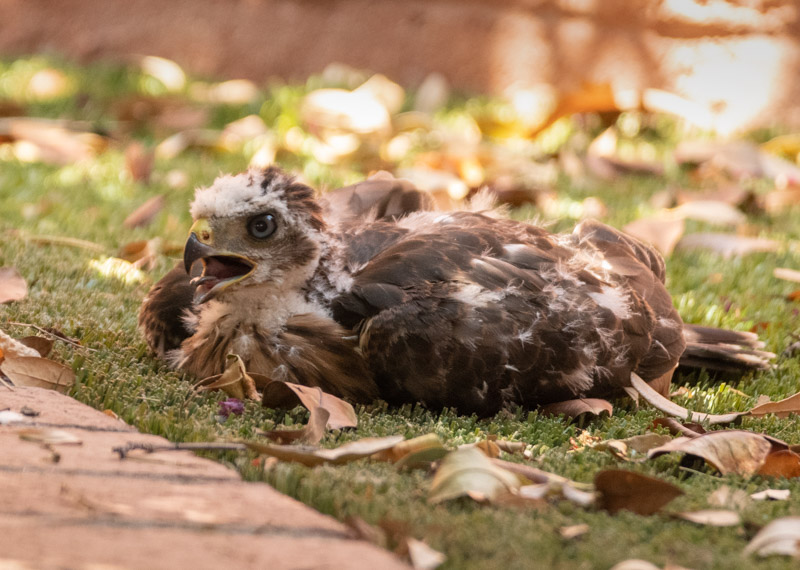
This is the baby of the bunch. You can see that its head and neck feathers are still very white compared to the hawk chick above. On these hot summer days birds, like dogs, will open their bills and pant to help dissipate heat. As they get hotter, their panting may increase in speed or they may open their bills even further for greater cooling. That look can make you feel sorry for them but they are taking care of themselves and keeping their cool !!
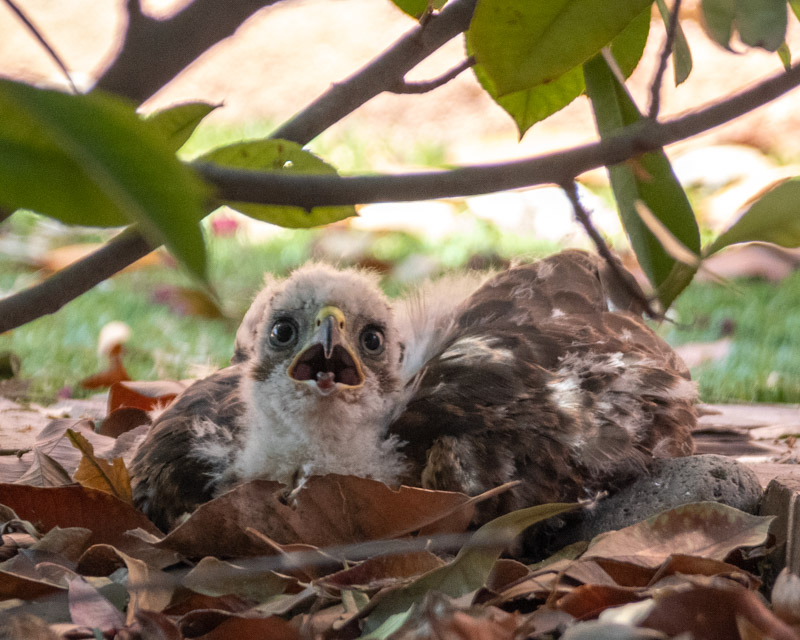
Moments later the little chick got up and moved around. It looked very spry and capable. In this shot you can again see how it has much less brown feathering than the other two chicks.
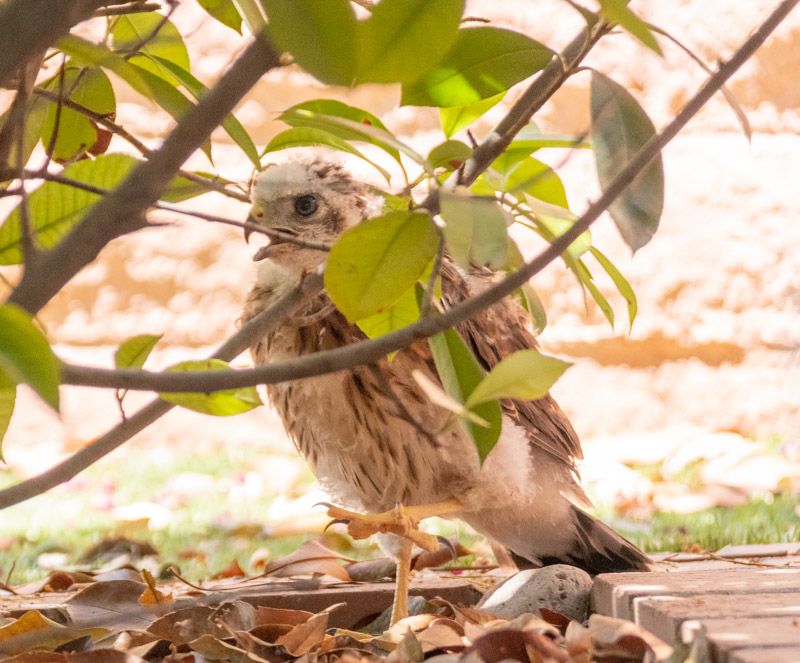
The first Cooper’s Hawk chick also got up to stretch. The parent Cooper’s had just flown to a nearby tree. Although I didn’t hear any calls, all three chicks got up to look around so they must have heard something!
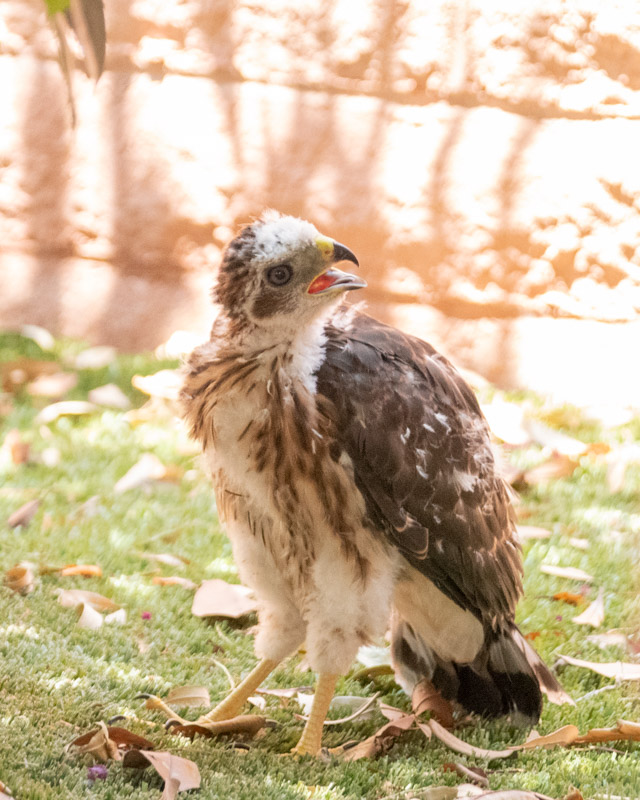
Here is the third Cooper’s chick. It was sitting in the shade on the other side of the bush from the first two birds. It got up, looked around, and began to march to the other side of the bush!
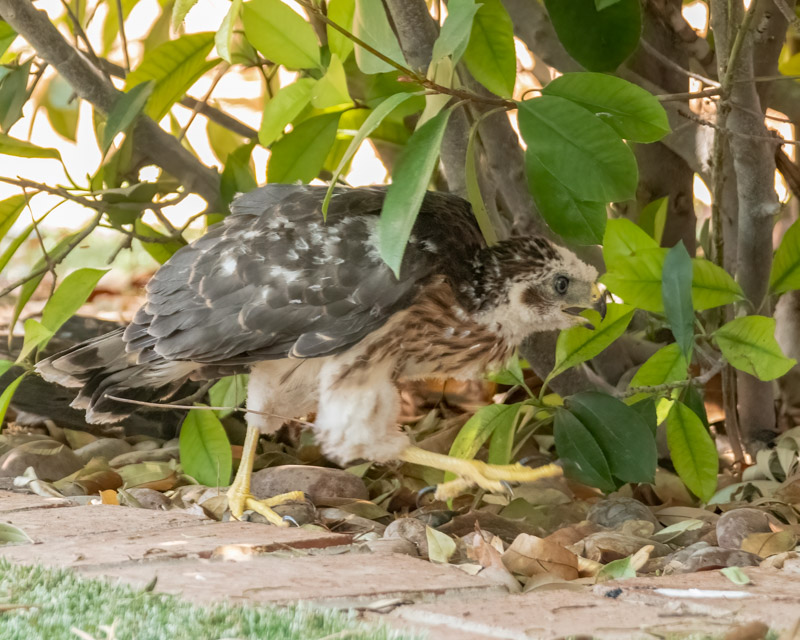
Halfway to the other side, it stopped and looked around. I really like this portrait shot. You can see the blue eyes of a juvenile Cooper’s Hawk. As an adult it will have red eyes. You can also see the tiny white downy feathers. What you are seeing is the second set of downy feathers of the bird. These white feathers are longer than the first natal down. At about two weeks, the juvenile feathers begin to emerge and they push the downy feathers out. You can see some of those downy feathers at the very end of the newly emerging juvenile feathers.
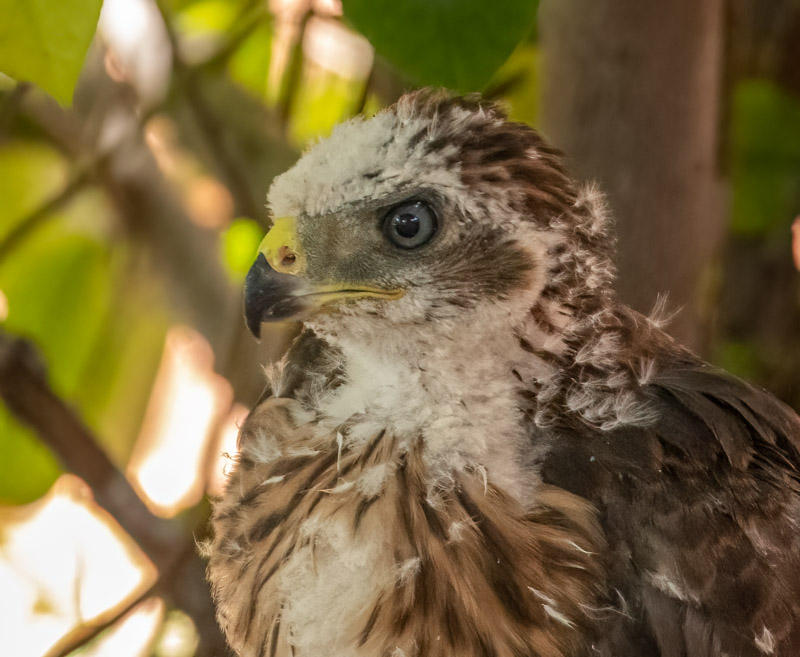
Cooper’s Hawks and many other birds have three eyelids. There are two ’normal’ ones that work just like yours and mine do. The third eyelid, called the nictitating membrane, is translucent. It protects and helps to moisten the eye, but it sure makes the bird look positively zombie-like.
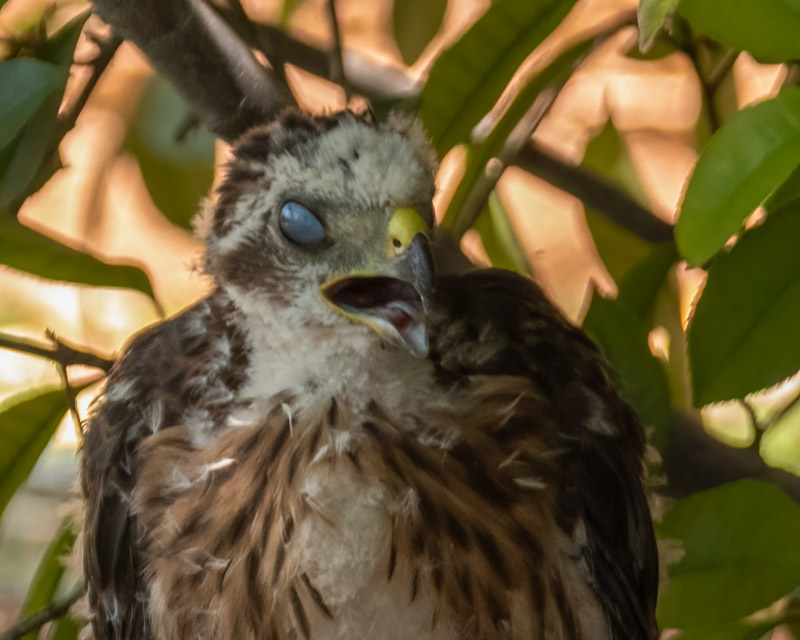
Meanwhile, the first Cooper’s chick is still standing and hanging out in the shade.
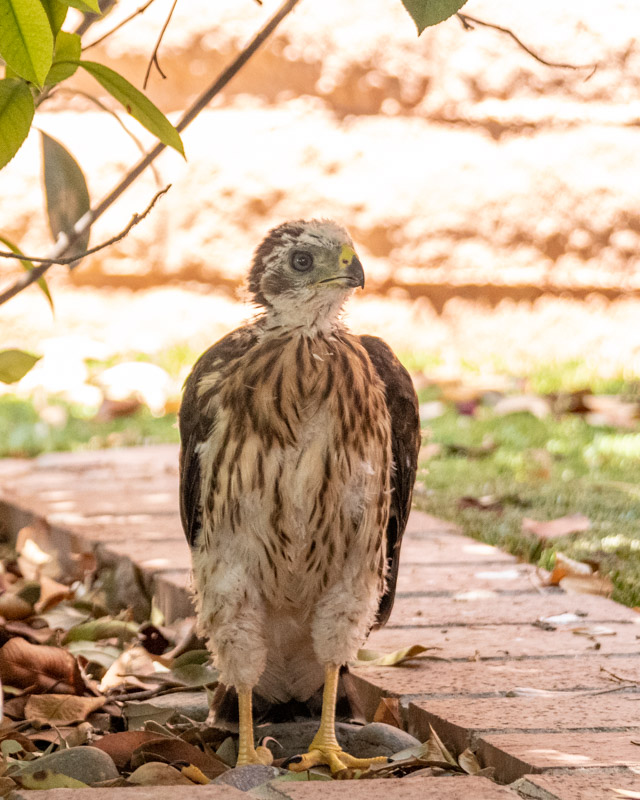
I returned the next morning to find one of the chicks on the back porch. It had been in the shade of a rose bush and then came down ‘inside’ of the gates the homeowner had set up to keep her dogs away from the Cooper’s Hawk chicks. This portrait shows the chick in front of various decorations on the porch. By 9 in the morning, it was already very hot out.
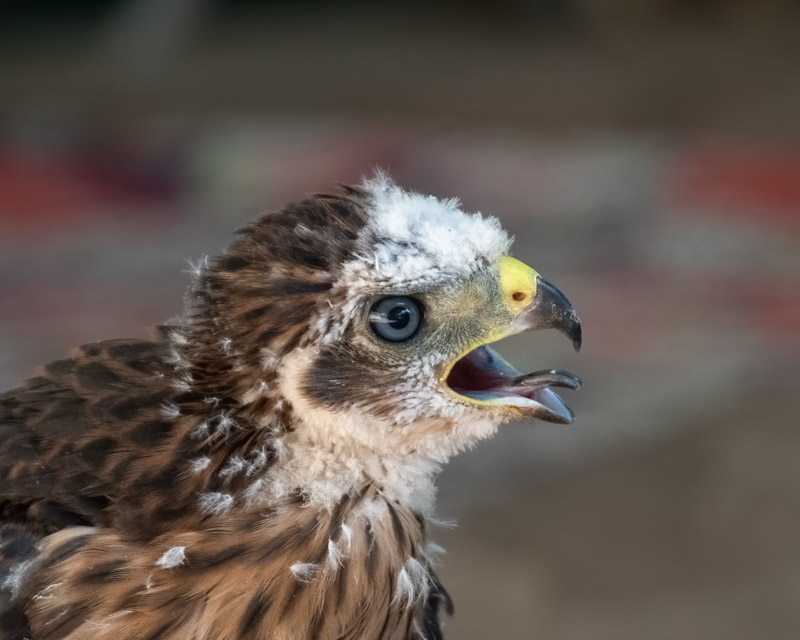
The chick made it back over the gates and headed towards the same tree well that I had seen the three chicks in the day before.
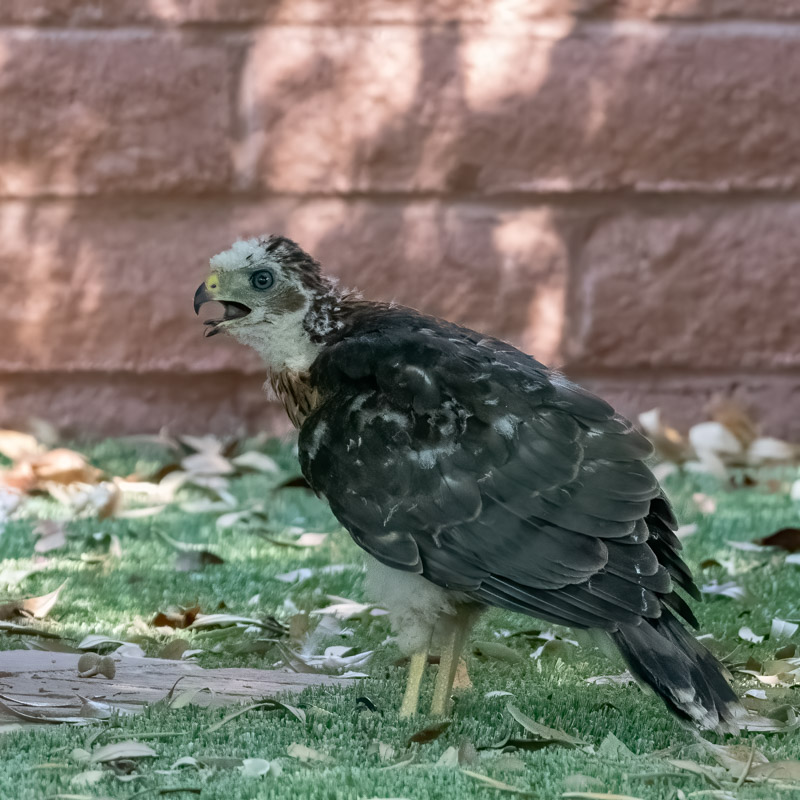
It joined its two siblings who were sitting next to a tupperware full of water. The kindly homeowner had placed several water dishes out for the bird to bathe in and/or to drink from. That yard already had a nice running water fountain and plants were watered on a timer system that left moist ground and puddles in several places for the chicks. No wonder the birds loved that yard! Here the first chick is standing next to its two siblings. The two ‘older’ birds are in front and the littlest chick is in the back mostly hidden from view.
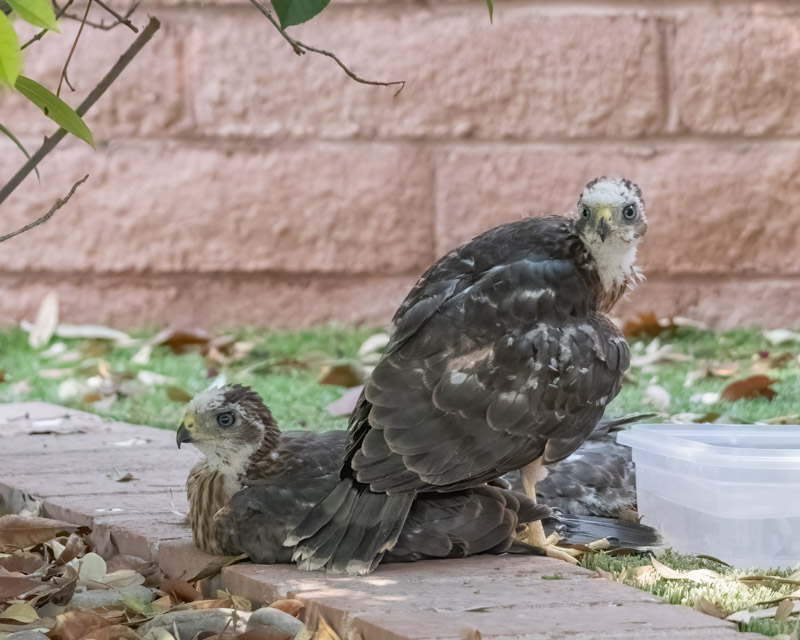
The second Cooper’s Hawk chick seems to be putting up with its sibling’s tail at his head! They were a close group!
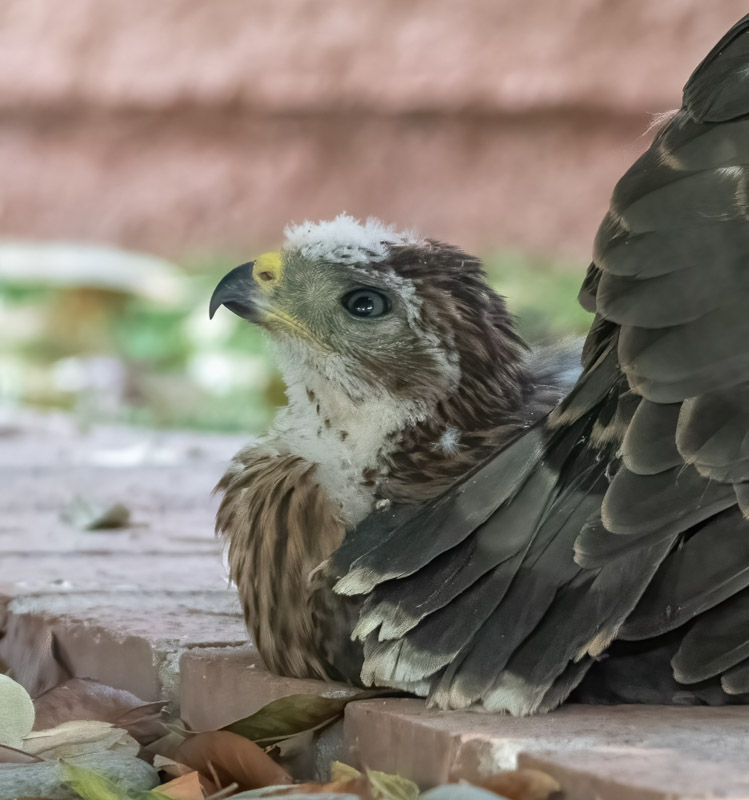
After the two bigger chicks moved away, the littlest one became active. Here, for some reason, it picked up a small twig and held it for a while.
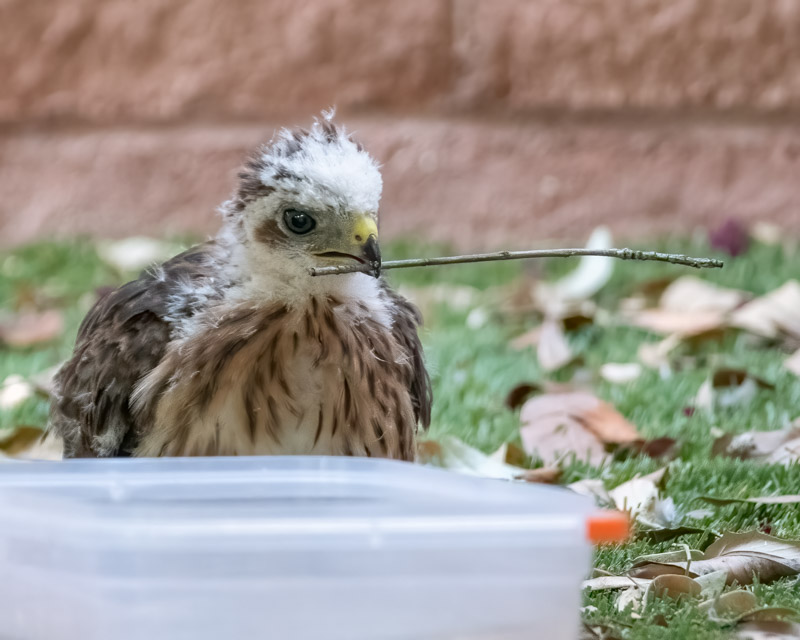
Throughout my two visits, one or another of the parents would come by and watch the chicks closely from the nearby nest tree. In this shot, the Cooper’s Hawk is stretching its right wing, its right leg, and its tail. This type of behavior can be seen in raptors often when they are getting ready to fly. You might notice how different the adult Cooper’s Hawk feathers are compared to the young Cooper’s Hawk feathers.
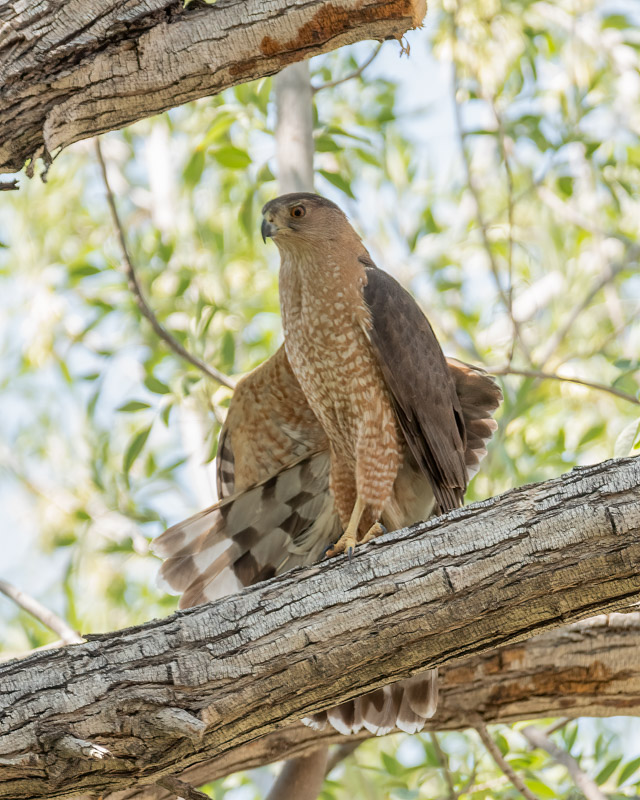
Shortly afterwards, the parent did fly to another perch spot. I have already shared this photo with you but now you have it in perspective at the end of the morning’s activities that I witnessed.
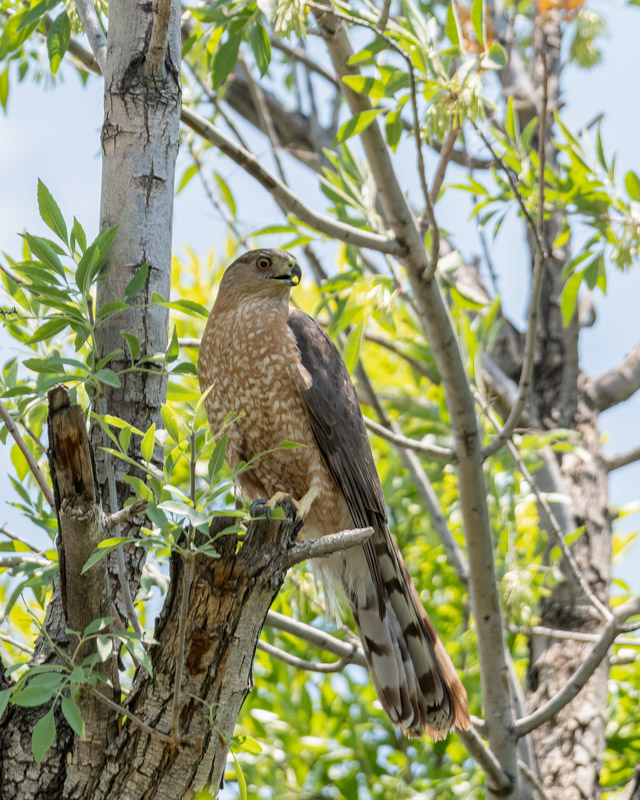
A few days later and the two older birds had flown off with the parents. They were staying nearby, watching and the parents were feeding the littlest one until it developed enough to begin traveling with the family. These birds were fortunate to nest at a house with a very friendly and welcoming host. Special thanks go to her for being so accommodating and understanding!
